The Ultimate Guide to the Best Guinea Pig Food
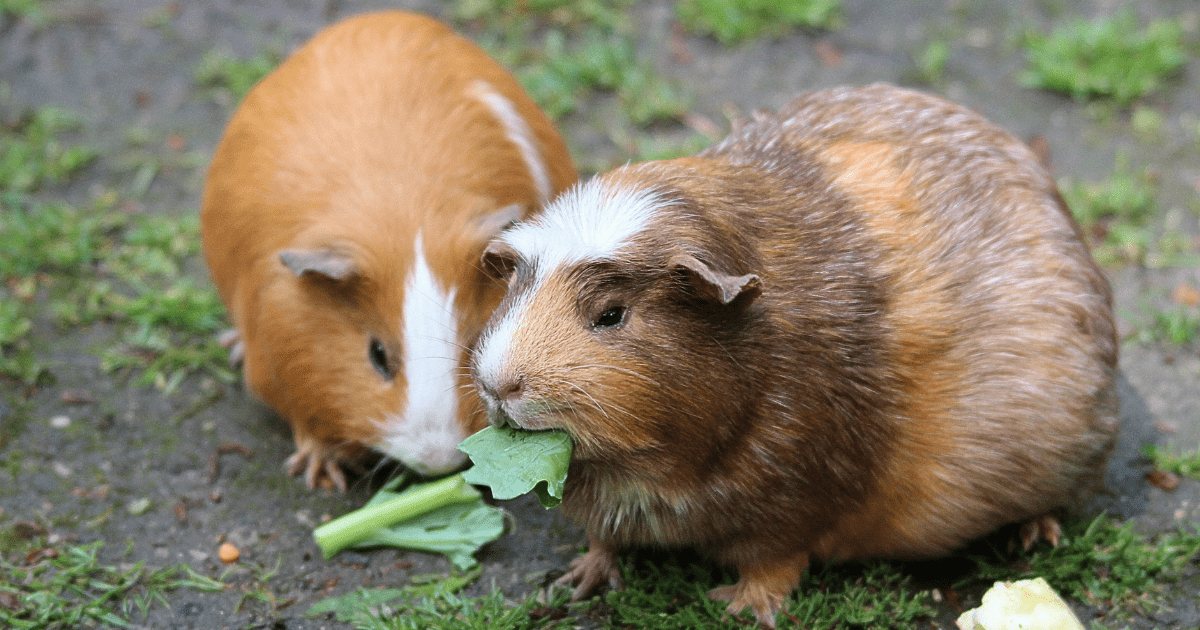
Introduction: Welcome to the Wonderful World of Guinea Pig Care!
Congratulations on your new guinea pig! These charming, affectionate creatures make wonderful pets, but caring for them comes with some responsibility, especially when it comes to feeding them the right foods. Just like any other pet, guinea pigs require a specific, well-balanced diet to thrive and stay healthy. And if you’re a first-time guinea pig owner, you may be wondering—what is the best guinea pig food to keep my new pet happy and healthy?
In this guide, we’ll break down everything you need to know about feeding your guinea pig, from selecting the best food to determining how much to feed them. Whether you’re looking for fresh veggies, pellets, or healthy treats, we’ll cover it all. Let’s get started!
What Makes the Best Guinea Pig Food for a Happy and Healthy Pet?
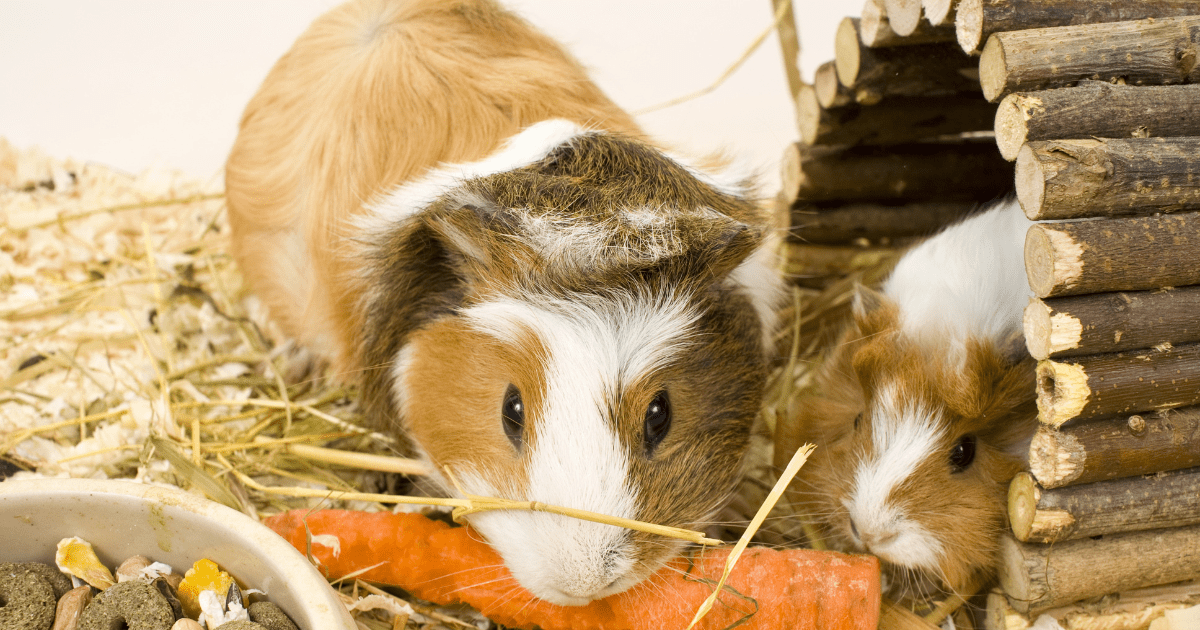
When it comes to the best guinea pig food, the main goal is to provide a diet that mirrors their natural needs while promoting their overall health. Guinea pigs are herbivores, which means they thrive on plant-based food. But with so many options available, how do you decide what’s truly the best for your guinea pig?
The Importance of Hay
The cornerstone of any guinea pig’s diet is hay. Timothy hay, meadow hay, and other high-fiber hays should be available to your pet at all times. Why? Hay helps maintain their digestive system, provides essential nutrients, and keeps their teeth properly worn down. Without enough fiber, guinea pigs can develop serious health issues like gastrointestinal problems or dental disease.
Timothy hay is particularly beneficial for guinea pigs because it’s low in calcium, making it the best choice for most adult guinea pigs. Some guinea pigs may also enjoy other types of hay such as orchard grass or meadow hay, which can be a fun way to vary their diet.
Fresh Vegetables: Nature’s Nutritional Powerhouse
In addition to hay, fresh vegetables are an essential part of your guinea pig’s diet. These vegetables provide important vitamins and minerals, especially Vitamin C, which guinea pigs cannot produce on their own. A deficiency in Vitamin C can lead to scurvy, a condition that can have severe consequences.
The best guinea pig food vegetables include:
- Bell peppers (especially red ones, which are packed with Vitamin C)
- Cucumber (a great hydrating food)
- Leafy greens such as romaine lettuce, cilantro, and kale
- Parsley and dandelion greens (these are rich in nutrients and a treat your guinea pig will love)
These vegetables should be offered daily, and each guinea pig needs about 1 cup of fresh veggies per day, depending on their size and age.
The Role of Pellets in a Guinea Pig’s Diet
While hay and fresh vegetables should form the foundation of your guinea pig’s diet, pellets are a convenient way to provide them with additional nutrients. However, it’s essential to choose high-quality guinea pig pellets that contain added Vitamin C and don’t have any artificial additives or too many seeds.
The best guinea pig pellets will:
- Be high in fiber (preferably around 18% or more)
- Contain Vitamin C (as guinea pigs cannot synthesize this vitamin on their own)
- Be free from seeds, nuts, or sugary ingredients that could harm your guinea pig’s health
Pellets should be fed in moderation. Too many pellets can lead to obesity, and guinea pigs can become picky eaters if they are offered too many pellet options. A small serving (about 1/8 to 1/4 cup per day) is usually enough.
Water: Always Fresh, Always Available
Water is often an overlooked aspect of guinea pig care. Always ensure your guinea pig has access to fresh, clean water. Guinea pigs can become dehydrated quickly, especially if they are eating too many dry foods. Water should be changed daily to ensure it’s free of contaminants.
You can provide water either in a water bottle or a shallow bowl. Some guinea pigs prefer one over the other, so it’s important to monitor which method they prefer. Clean water should always be available for your guinea pig, especially when they’re eating fresh vegetables that might make them thirstier.
Fresh vs. Pellets: Which Is the Best Guinea Pig Food Choice for Your New Pet?
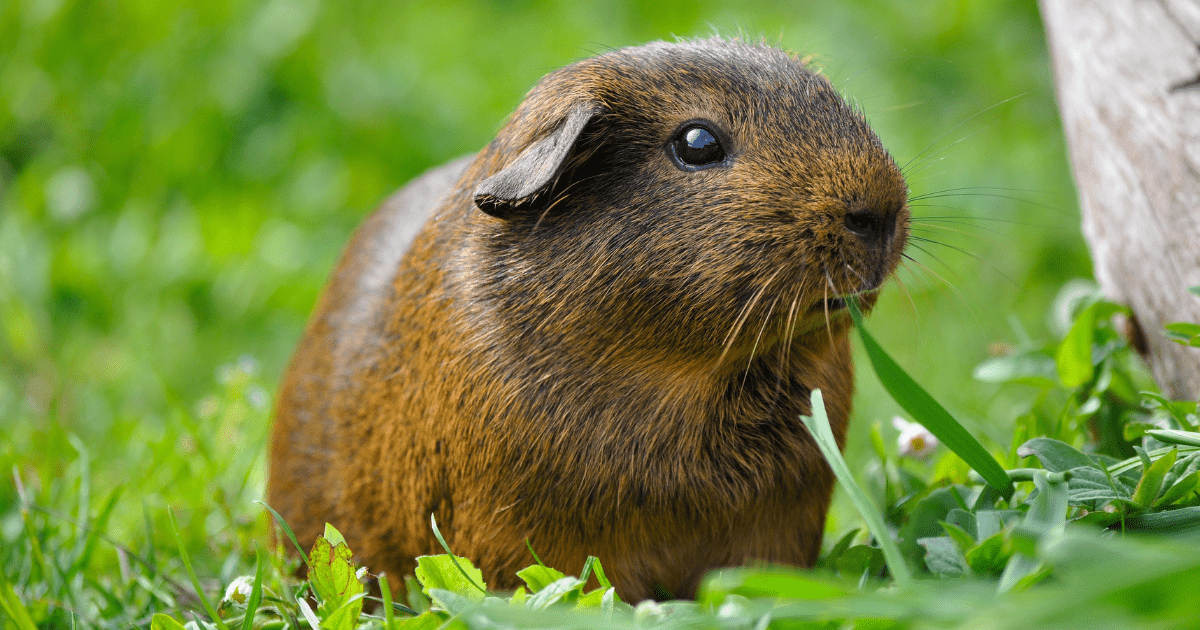
As a new guinea pig owner, it’s important to decide whether fresh food or pellets should dominate your pet’s diet. The simple answer is: both! But the proportions of each will vary depending on your guinea pig’s age, health, and activity level.
Why Fresh Food Is So Important
Fresh food, particularly fresh vegetables, offers a variety of essential nutrients, and it’s an opportunity to enrich your guinea pig’s daily diet. Fresh vegetables are an excellent source of:
- Vitamin C (which is essential to prevent scurvy)
- Water (to help with hydration, especially in the hotter months)
- Fiber (for digestion and dental health)
However, not all guinea pigs will eagerly consume fresh veggies, and some can even develop sensitivities to certain types. It’s also essential to wash veggies thoroughly to remove any pesticides.
Why Pellets Are Necessary
Pellets are an easy way to ensure that your guinea pig is getting a balanced diet with the added vitamins and minerals they need. The right kind of guinea pig pellets should provide a higher concentration of fiber (important for digestion), Vitamin C (for immune function), and additional nutrients like protein and fat that your guinea pig needs in small amounts.
But pellets should not be the bulk of your guinea pig’s diet. When given in excess, pellets can cause obesity, especially if your guinea pig isn’t very active. So while pellets are necessary for balance, fresh vegetables and hay should take precedence.
Balancing Fresh Food and Pellets
The best approach is to ensure your guinea pig gets unlimited hay (which should be the bulk of their diet), a daily serving of fresh veggies, and a small, measured portion of pellets. Fresh food will provide them with hydration, Vitamin C, and fiber, while pellets will provide them with the vitamins and minerals necessary for health. Balancing these elements is key to providing your guinea pig with the best care and ensuring they stay healthy and energetic.
How to Determine the Best Guinea Pig Food for Sensitive Tummies
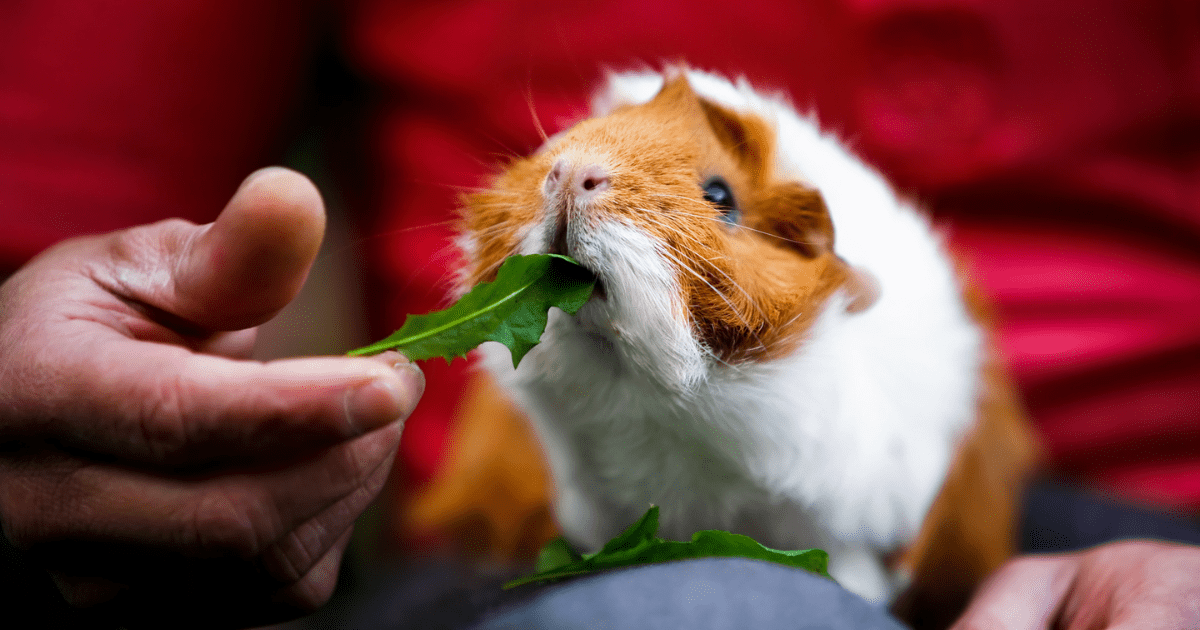
Guinea pigs, like people, can have sensitive digestive systems. If you’ve noticed your guinea pig being a little less than enthusiastic about mealtime, or if they’re experiencing digestive upset like diarrhea or bloating, it could be a sign that certain foods aren’t agreeing with their stomach. Understanding the causes of these digestive issues and choosing the best guinea pig food for sensitive tummies can help keep your furry friend comfortable and happy.
Identifying Signs of Digestive Sensitivity
Before diving into food choices, it’s essential to understand the symptoms of a sensitive stomach in guinea pigs. Common signs that your guinea pig might have digestive issues include:
- Diarrhea or loose stools
- Bloating or a swollen belly
- Reduced appetite or refusal to eat
- Gas (which can be accompanied by painful squeals or discomfort)
- Lethargy or noticeable changes in behavior
These symptoms often indicate that your guinea pig’s digestive system is not processing food properly. If you notice any of these signs, it’s essential to consult a vet to rule out more serious conditions. In the meantime, adjusting your pet’s diet can help relieve some discomfort.
Choosing the Right Hay for Sensitive Stomachs
For guinea pigs with sensitive tummies, hay is still a staple food, but it’s important to choose the right kind. Timothy hay is generally well-tolerated by guinea pigs of all ages, and it’s rich in fiber, which is essential for digestion. If your guinea pig is having trouble with bloat or diarrhea, try switching to a high-fiber, low-protein hay like orchard grass or meadow hay, which may be gentler on the digestive system.
Additionally, avoid hays that contain a high amount of dust or mold, as these can irritate your guinea pig’s respiratory system and exacerbate digestion problems.
Choosing Low-Sugar Vegetables
When your guinea pig has a sensitive stomach, certain vegetables can be harder to digest. Avoid high-sugar vegetables and fruits, such as carrots and bell peppers, as they can cause excess gas or bloating. Instead, opt for gentler options like:
- Cucumber (a great hydrating veggie that is gentle on the tummy)
- Leafy greens like romaine lettuce, kale, and dandelion greens
- Parsley, which is rich in fiber but low in sugar
It’s also important to avoid giving your guinea pig too many vegetables at once, as this can overwhelm their digestive system. Instead, introduce new foods gradually to monitor for any adverse reactions.
Opting for Pellets Without Additives
When it comes to pellets for sensitive guinea pigs, choosing plain, high-fiber pellets without added seeds or artificial colors is essential. Many commercially available pellets are full of fillers that can upset your guinea pig’s stomach. Always opt for plain, high-quality pellets that contain added Vitamin C and essential minerals, but without unnecessary sugars or additives.
Be mindful that pellets designed for young guinea pigs may be higher in protein and calcium, which may not be ideal for adults or those with sensitive tummies. Always choose the right type of pellet for your guinea pig’s specific needs based on their age and health.
Limit Fruits and High-Sugar Foods
While fruits are a fun treat for guinea pigs, they are often high in sugar, which can lead to digestive issues like gas or bloating. If your guinea pig has a sensitive tummy, it’s best to limit high-sugar fruits like bananas, grapes, and apples. Instead, opt for low-sugar fruits like blueberries or strawberries, but only offer them in small amounts as treats.
Probiotics and Supplements for Gut Health
To further support your guinea pig’s digestive health, consider adding a probiotic supplement to their diet. Probiotics contain live bacteria that help maintain a healthy gut flora, which can improve digestion and reduce symptoms of bloating or diarrhea. Some guinea pig pellets already include probiotics, but you can also purchase separate probiotic powders or liquids designed specifically for small animals.
Additionally, a high-quality Vitamin C supplement is essential for maintaining overall health, as Vitamin C plays a critical role in immune function and collagen formation, which is especially important if your guinea pig is experiencing digestive stress.
Best Guinea Pig Food for Energy: Keep Your Pet Active and Playful
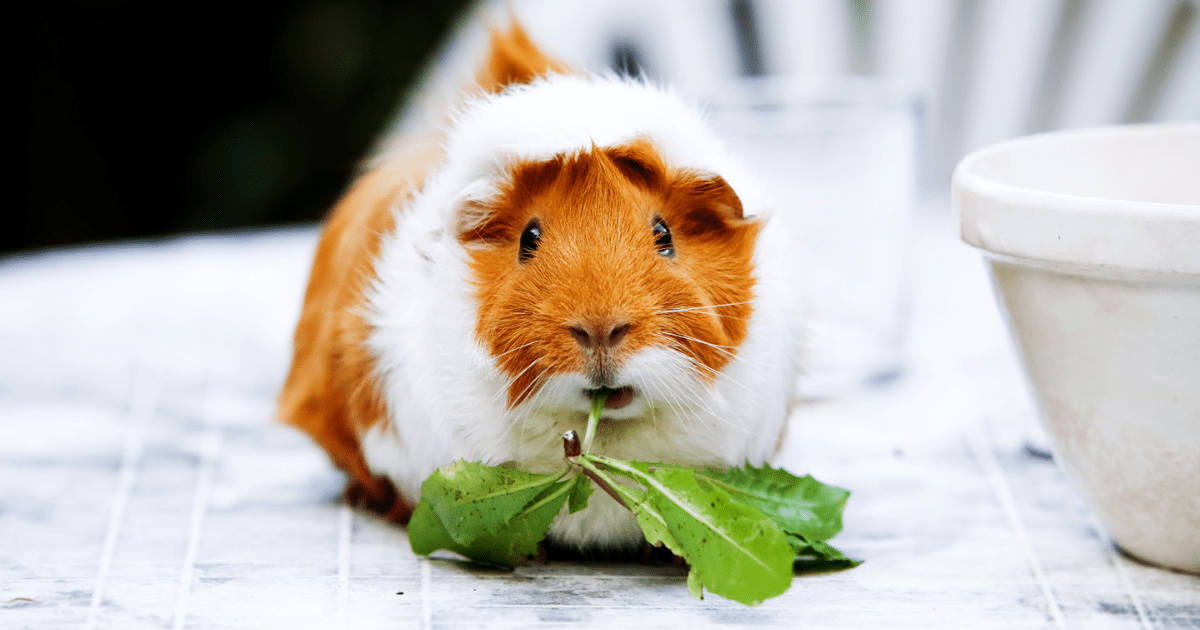
Keeping your guinea pig energized and active requires feeding them foods that support their metabolism, energy levels, and overall vitality. Guinea pigs are naturally curious and playful, so providing them with the best guinea pig food to keep them energized will ensure they enjoy a long, healthy life full of adventures!
The Role of Hay in Energy Levels
While hay is primarily for digestion, its high fiber content also plays a role in maintaining steady energy levels. Guinea pigs have small stomachs and fast metabolisms, so they need to eat throughout the day to keep their energy levels up. Timothy hay or any other high-fiber hay provides the steady, slow-burning energy that your guinea pig needs to stay active. It’s an all-day food that will give them constant access to nutrients and keep them full without causing sudden spikes in blood sugar.
Leafy Greens: A Nutritional Boost
To fuel their energy needs, guinea pigs need nutrient-packed leafy greens. These greens are loaded with essential vitamins and minerals like Vitamin A, Vitamin C, and calcium—all of which contribute to energy production and overall well-being.
Popular greens like kale, spinach, cilantro, and parsley are packed with antioxidants and nutrients, making them an excellent choice for guinea pigs that need energy and a nutritional boost. Be sure to offer a variety of greens each day to keep your guinea pig excited about mealtime while providing them with a broad spectrum of nutrients.
Pellets Designed for Energy
High-quality guinea pig pellets are another great way to provide your pet with extra energy. Look for pellets that are specifically formulated for active guinea pigs and include Vitamin C, fiber, and healthy minerals. These pellets help fill in nutritional gaps and provide a balanced combination of essential nutrients.
Keep in mind that while pellets are important, they should be fed in moderation. Overfeeding can lead to obesity, which can actually sap your guinea pig’s energy rather than enhance it. Stick to about 1/8 to 1/4 cup of pellets per day for adults, and adjust as necessary depending on your guinea pig’s age and activity level.
Foods High in Healthy Fats for Energy
Incorporating small amounts of healthy fats into your guinea pig’s diet can also contribute to their energy levels. Guinea pigs need some fat in their diet for fat-soluble vitamins (like Vitamin A and Vitamin D) and to support overall cellular function. You can introduce small amounts of chia seeds or flaxseeds, both of which are high in omega-3 fatty acids and provide essential energy for active guinea pigs.
However, it’s important not to overfeed these foods, as high-fat diets can lead to obesity, which will have the opposite effect of promoting energy. Moderation is key.
Exploring the Best Guinea Pig Food Treats for Fun and Flavor
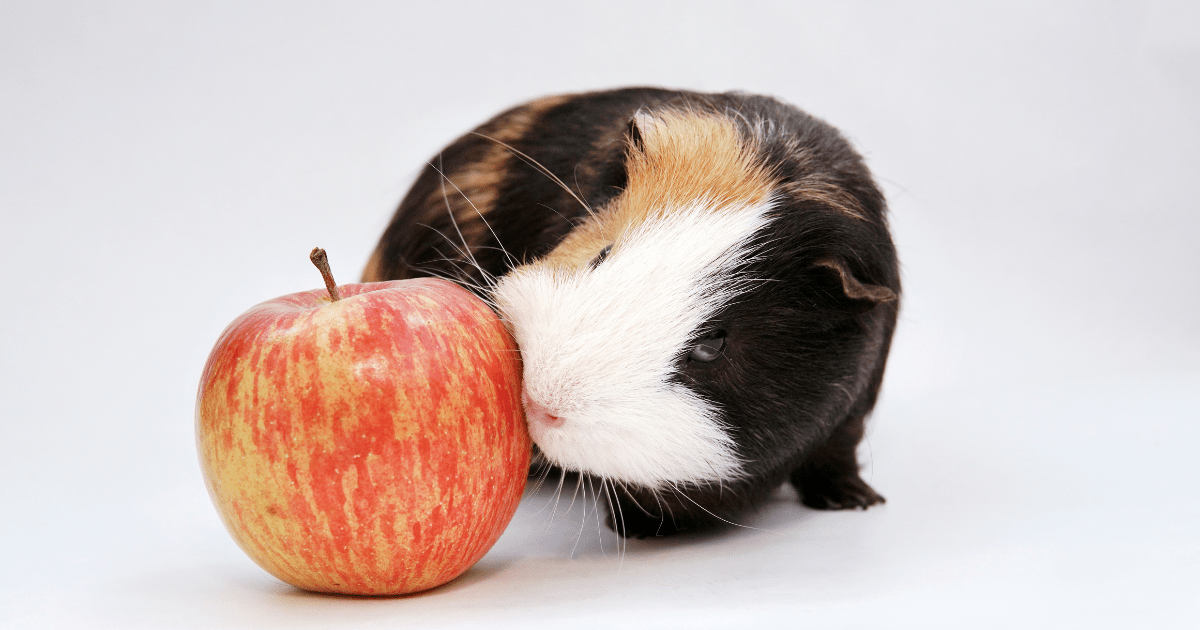
Every guinea pig deserves a little indulgence now and then, and offering tasty treats is one of the best ways to bond with your new pet. However, it’s crucial to choose treats that are not only delicious but also nutritious, providing your guinea pig with additional benefits that support their overall health. Let’s explore the world of guinea pig food treats and find the best options to keep your pet happy, healthy, and excited at mealtime!
Why Treats Are Important for Guinea Pigs
Treats should be offered in moderation as a fun way to enrich your guinea pig’s diet. While hay, fresh veggies, and pellets make up the majority of their meals, treats can provide variety and excitement. They’re also a great training tool, helping to build trust and bond with your guinea pig. However, it’s essential that treats do not replace their essential foods, and they should be offered in small, controlled amounts to avoid nutritional imbalances.
Fresh Fruits as Treats
While guinea pigs should get most of their sugar from vegetables, fresh fruits can make wonderful treats when given in moderation. Fruits like strawberries, blueberries, apple slices, and pineapple are full of vitamins and antioxidants that are great for your guinea pig’s immune system. However, fruits should be reserved for occasional rewards because of their higher sugar content, which can lead to digestive upset if consumed too often.
When feeding fruit, always remove any seeds or pits that could be harmful. For example, apples contain cyanide-like substances in their seeds, which can be toxic in large amounts. Stick to small, bite-sized pieces and make sure your guinea pig enjoys them in moderation.
Herbal Treats: A Natural Delight
Herbal treats like dried parsley, dandelion leaves, and mint are fantastic ways to enhance your guinea pig’s diet without overwhelming them with too much sugar. These herbs are packed with vitamins and minerals, as well as natural flavor. Plus, guinea pigs absolutely love the smell of fresh herbs, which can make them irresistible!
You can also make your own herbal mix by drying fresh herbs from your garden or purchasing pre-dried herb blends designed specifically for guinea pigs. Keep in mind, though, that herbs should be used sparingly, as too much can upset your guinea pig’s stomach. Offering a few sprigs of fresh mint or parsley can be a lovely treat every few days.
Chewable Toys and Treats
Guinea pigs love to chew! Not only does chewing keep their teeth healthy and trim, but it’s also a fun way to keep them engaged. The best guinea pig food treats for satisfying their chewing instincts include hay cubes, timothy hay-based treats, and even wooden chew toys. These types of treats will help keep your guinea pig’s teeth from growing too long and promote good dental hygiene.
You can also find treats that are designed to be both nutritious and chews, such as hay-based sticks or fruit-flavored hay blocks. These treats are great for offering variety in your guinea pig’s diet while supporting their natural chewing behavior.
Store-Bought Guinea Pig Treats: What to Look For
When buying store-bought treats, it’s essential to choose ones that are safe, healthy, and free from artificial additives or sugars. Many commercial guinea pig treats contain high levels of sugar, preservatives, or seeds, which can be harmful to your pet in the long term. Look for treats that contain high-quality ingredients, such as dried vegetables, dried herbs, or timothy hay. Always read labels and avoid products that include preservatives like BHT or BHA, which can be toxic to guinea pigs.
If you’re unsure whether a particular treat is safe for your guinea pig, consult with a veterinarian to make an informed decision.
The Importance of Moderation
While it’s tempting to give your guinea pig as many treats as they want, moderation is key. Guinea pigs are prone to obesity and digestive issues, so overfeeding treats can cause health problems. For the best results, limit treats to no more than 10-15% of your guinea pig’s daily food intake, ensuring that the majority of their nutrition comes from hay, vegetables, and pellets.
How Often Should You Feed Your Guinea Pig the Best Guinea Pig Food?
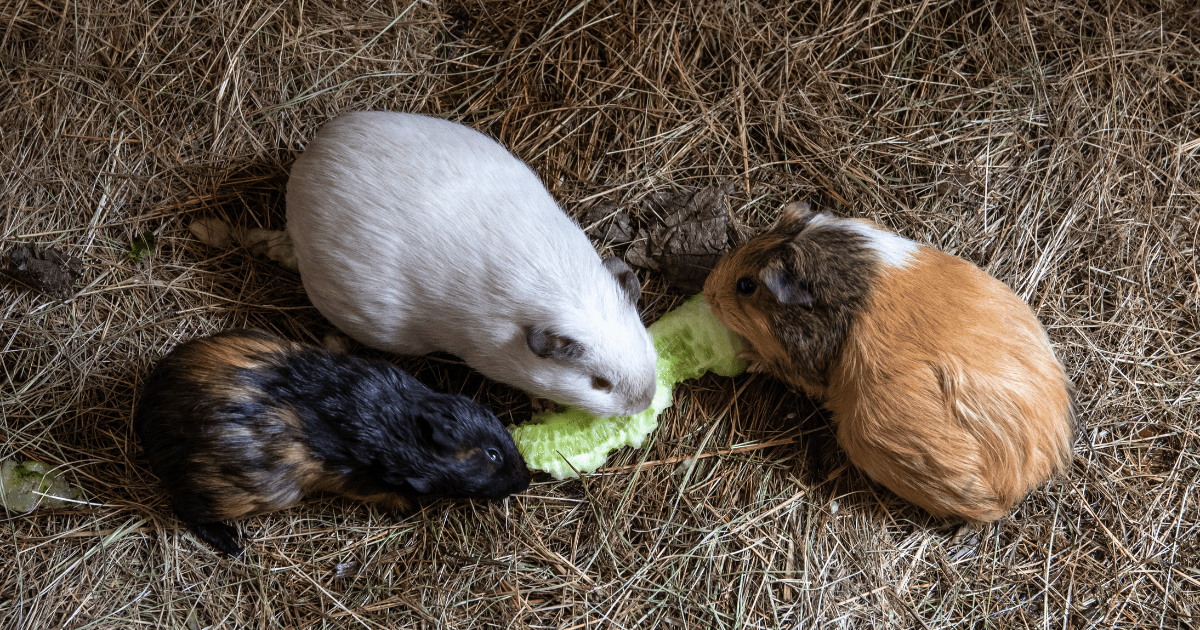
Now that you know what makes up the best guinea pig food, the next big question is: How often should you feed your guinea pig? Guinea pigs have fast metabolisms, so they need to eat frequently to stay healthy. But how do you manage their feeding schedule to ensure they’re getting the right nutrition at the right time?
How Much Should You Feed Your Guinea Pig?
The best guinea pig food will consist mainly of hay, fresh vegetables, and a smaller amount of pellets. But how much of each should you be giving your guinea pig?
- Hay: Your guinea pig should have unlimited access to hay at all times. Hay provides the fiber they need for digestion and supports their dental health, so it’s important that they always have enough. You can place hay in a hay rack or scatter it around their cage to encourage natural foraging behavior.
- Fresh Vegetables: Aim to offer 1 cup of fresh vegetables per day for each guinea pig. This can vary depending on the size of your guinea pig, but a variety of veggies like bell peppers, leafy greens, and cucumbers will keep them happy and healthy. It’s a good idea to divide this into two meals—morning and evening—so your guinea pig is getting fresh food throughout the day.
- Pellets: Pellets should be offered in moderation. For an adult guinea pig, 1/8 to 1/4 cup of high-quality pellets per day is sufficient. Young guinea pigs, pregnant females, and seniors might require slightly more. It’s important to follow the guidelines on the packaging or consult with your vet to find the right amount.
Establishing a Feeding Routine
Guinea pigs thrive on routine, so it’s important to feed them at the same times each day. This helps regulate their digestive system and keeps them on track with their eating habits. If you’ve been giving your guinea pig pellets or veggies at random times, try to establish a routine, offering fresh veggies and pellets in the morning, and refilling their hay and water supply throughout the day.
How Often Should You Offer Treats?
Treats should be given sparingly, no more than a few times a week. Guinea pigs can easily become overweight if they are given too many treats, and their digestive systems can become upset if they eat too many sugary fruits or fatty snacks. Offer treats as a special reward or for training purposes, but avoid overindulging.
Water Intake: Always Fresh, Always Available
Just like food, fresh water should always be available to your guinea pig. Their water bottle should be checked daily to ensure it’s clean and functioning properly. If your guinea pig prefers a bowl, be sure to refill it regularly and clean it out every day.
The Best Guinea Pig Food to Avoid: What to Never Feed Your Pet
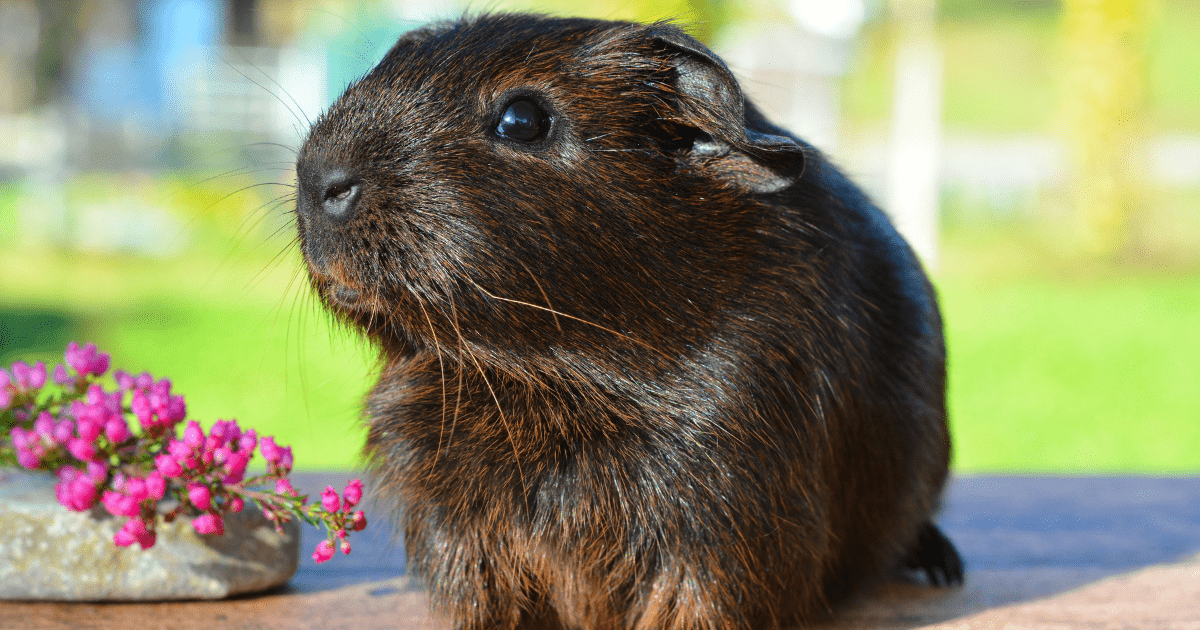
Even though guinea pigs can eat a wide variety of fresh foods, some things should never be offered to them, as they can cause serious health issues. Avoid the following foods at all costs:
- Iceberg Lettuce: This lettuce contains very little nutritional value and can cause diarrhea in guinea pigs.
- Potatoes: Potatoes contain solanine, a toxin that can be fatal to guinea pigs.
- Onions and Garlic: Both of these foods contain compounds that can cause severe gastrointestinal distress and even damage red blood cells.
- Citrus Fruits: Fruits like oranges and lemons are too acidic for guinea pigs and can upset their stomachs.
- Nuts and Seeds: Guinea pigs can’t digest nuts and seeds properly, and these can lead to choking hazards or obesity due to their high-fat content.
- Chocolate and Sweets: These are toxic to guinea pigs, just as they are for many other animals, and should never be given.
Conclusion: The Key to a Happy, Healthy Guinea Pig
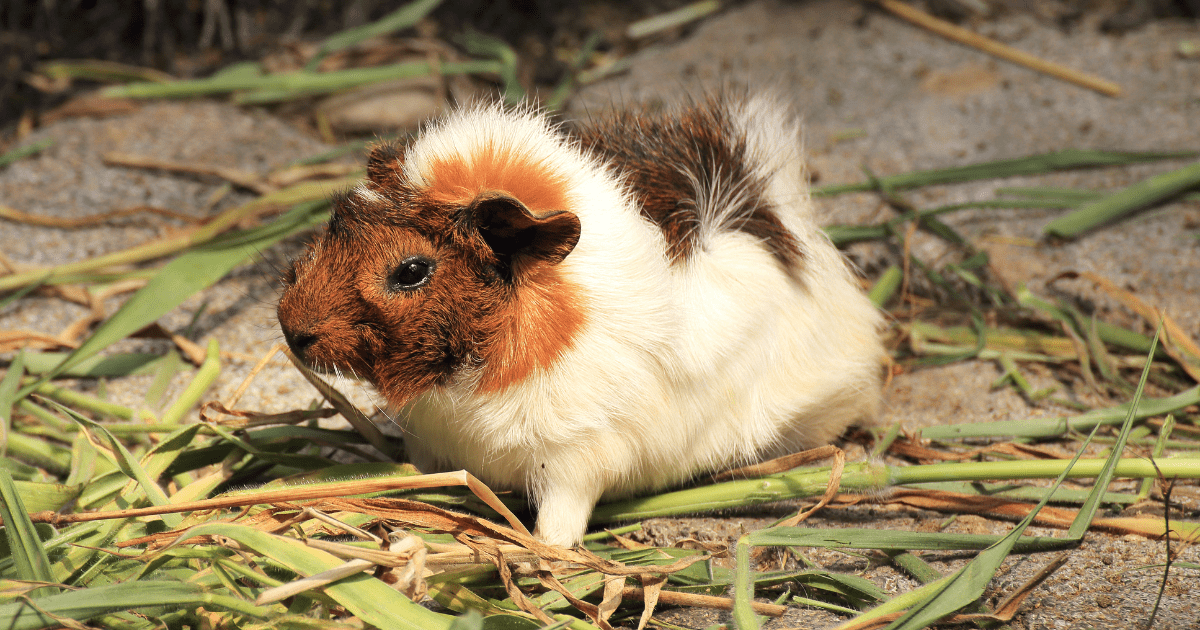
Feeding your guinea pig the best guinea pig food involves a combination of providing them with unlimited hay, fresh veggies, high-quality pellets, and a few nutritious treats. Paying attention to their dietary needs, offering variety, and making sure they have constant access to clean water will help them stay healthy, happy, and energetic.
By following the advice in this guide, you’ll ensure your guinea pig lives a long, active life. Remember, every guinea pig is unique, so it’s important to observe your pet’s preferences and behaviors while fine-tuning their diet to meet their specific needs.
For more information on guinea pig care, including diet tips, health advice, and product recommendations, visit The Paws Hub.